

JAY-Z BP3 Confirms 2010 North American Tour Dates

JAY-Z’s BP3 North American tour will make a cross-country trek in 2010 stopping at arenas in major markets including Houston, Dallas, New Orleans, Atlanta, Greensboro, Washington, Boston, Pittsburgh, St Louis, Indianapolis, Denver, San Jose, Los Angeles and more. Additional day of show and on sale information will be announced shortly for stops in East Rutherford, Uniondale, Atlantic City and Detroit.
Citi® cardmembers will have access to presale tickets beginning November 10th at 10am local time through Citi’s Private Pass® Program. For complete presale details visit www.citiprivatepass.com. Citi® cardmembers will also have access to VIP Ticket Packages that include VIP Lounge seats, personal concierge, a private pre-show VIP party and more.
“Jay-Z is the greatest rapper alive. Anyone who was in attendance at his sold-out KeyArena concert Saturday night can attest to that fact. Hova, Young Hov, Jigga, Hovito, whatever you call him Shawn Carter is on top of the rap game and there were no signs of him stepping down any time soon during his career-spanning two-hour show.”
Seattle Post Intelligencer (KeyArena Review), October 19, 2009
“In a performance that had the feel of a stadium show, thanks to the scope of the production and the magnitude of the star on stage, Jay-Z did something remarkable during his encore Friday night. Even more remarkable than the tight, full-band renditions of stunners like ‘Big Pimpin’ and ‘D.O.A. (Death of Auto-Tune)’ and more attention-getting than his flashy New York City skyline backdrop. He made individual members of the audience feel that they were as important as him, an entertainer with 11 No. 1 albums and an entrepreneur reportedly worth $150 million.” The Wilkes-Barre Times Leader (Penn State Review), October 14, 2009
The current North American tour, a mix of 26 colleges and arenas, has featured sold out dates including Pennsylvania State’s Bryce Center, UCLA’s Pauley Pavilion, Northern Kentucky University’s Bank of Kentucky, Eastern Michigan University’s Convocation Center, and the University of Massachusetts’ Mullins Center as well as, the KeyArena in Seattle, Kelowna British Columbia’s Prospera Place, Philadelphia’s Wachovia Center, Providence’s Dunkin’ Donuts Center and Baltimore’s 1st Mariner Arena.
Live Nation’s mission is to maximize the live concert experience. Our core business is producing, marketing and selling live concerts for artists via our global concert pipe. Live Nation is the largest producer of live concerts in the world, annually producing over 22,000 concerts for 1,600 artists in 33 countries. During 2008, the company sold over 50 million concert tickets and drove over 70 million unique visitors to LiveNation.com. Live Nation is transforming the concert business by expanding its concert platform into ticketing and building the industry’s first artist-to-fan vertically integrated concert platform. The company is headquartered in Los Angeles, California and is listed on the New York Stock Exchange, trading under the symbol LYV. For additional information about the company, please visit www.livenation.com/investors.
First Call Analyst: FCMN Contact: [email protected]
SOURCE: Live Nation
CONTACT: Jana Fleishman, [email protected] , for JAY-Z; or Liz Morentin of Live Nation, +1-310-975-6860, [email protected]
Web Site: http://www.livenation.com/
Read more about

- Products search
No products in the cart.
Return to shop

Halloween Gift Ideas
Pick up your favorite items

Gift for Christmas
Here are a few options to consider
- Bedding Set
- Poster & Canvas
- 3D Clothing
- 2D Clothing
- Hawaiian Shirt
- Ugly Sweater
- Track your order

Bp Tour 2010 Jay-Z Shirt
$ 20.95
CENTIMETERS

- 5.3-ounce, 100% cotton (99/1 cotton/poly (Ash) & 90/10 cotton/poly (Sport Grey)
- Heavyweight classic unisex tee
- Taped neck and shoulders; Tearaway label
- Decoration type: Digital Print

Products are fulfilled and shipping from the
Jul 10 - Jul 12
Jul 16 - Jul 23
- Description
- Shipping & Manufacturing Info
Bp Tour 2010 Jay-Z Shirt is a must-have item for any fan of the legendary rapper and entrepreneur. This shirt features the iconic logo of the Bp Tour, which was Jay-Z’s first solo headlining tour in 2010. The shirt is made of high-quality cotton and comes in various sizes and colors. Order yours today and show your love for Jay-Z!
Bp Tour 2010 Jay-Z Shirt: The Ultimate Merch for Jay-Z Fans
Are you a fan of Jay-Z, one of the most influential and successful artists of all time? Do you want to own a piece of his history and legacy? If so, you need to get your hands on the Bp Tour 2010 Jay-Z Shirt!
This shirt is not just a regular clothing item, it’s a souvenir from the Bp Tour, which was Jay-Z’s first solo headlining tour in 2010. The tour spanned across North America and Europe, and featured some of his biggest hits such as Empire State of Mind, Run This Town, On to the Next One, and more. The tour also had special guests like Kanye West, Drake, Beyoncé, Rihanna, and Eminem.

The shirt features the logo of the Bp Tour, which is a stylized version of Jay-Z’s initials and a crown. The logo represents Jay-Z’s status as the king of hip-hop and his nickname “Hova”. The shirt is made of 100% cotton and has a soft and comfortable feel. It comes in various sizes and colors, so you can choose the one that suits you best.
The Bp Tour 2010 Jay-Z Shirt is a perfect gift for yourself or for any Jay-Z fan in your life. It’s a way to show your appreciation and admiration for the rap legend and his music. It’s also a great way to express your style and personality. Whether you wear it casually or for a special occasion, you’ll always look cool and trendy with this shirt.
Don’t miss this opportunity to own a piece of Jay-Z’s history and legacy. Order your Bp Tour 2010 Jay-Z Shirt today and enjoy the quality and design of this amazing product! You won’t regret it!
SHIPPING POLICY
Shipping cost.
The shipping cost within the U.S. is: 5.99 USD + 2 USD per additional item
For international shipping: from 11 USD + 6 USD per additional item
WHERE DO WE DELIVER?
We provide worldwide shipping.
Shipping time
US Regions :
Other Countries:
Handling time (Mon-Fri) : 2-9 days
Shipping time ( Mon-Fri ) : 15-30 days.
Note : The public holidays, destination countries and couriers will be affected the shipping time too.
Total delivery time= Handling time + Shipping time
HAPPY CUSTOMERS, HAPPY US
There are no reviews yet.
Be the first to review “Bp Tour 2010 Jay-Z Shirt”
Your review *
Name *
Email *
Save my name, email, and website in this browser for the next time I comment.
- Track order
- Christmas Gifts
- Halloween Gifts
- Father’s Day
- Thanksgiving Gifts
- Valentine’s Day
- Veterans Day
- Independence Day
- LGBT Community
- Memorial Day
- St. Patrick’s Day
Username or email address *
Password *
Remember me Log in
Lost your password?
FREE SHIPPING FOR ALL ORDERS OVER $120

- Search for:
- (USD) $ United States (US) dollar ($) Pound sterling (£) Euro (€) Australian dollar ($) Canadian dollar ($)
No products in the cart.
- ALL PRODUCTS
- Mother’s Day
- Father’s Day
- St. Patrick’s Day
- 4th Of July
- Thanksgiving
- Baseball – MLB
- Basketball – NBA
- Basketball – NCAA
- Football – NFL
- Hockey – NHL
- Harry Potter
- Disney Movies
- Biker Motorcycle
- The Outlaws MC
- Sons of Anarchy
- Bandidos MC
- Hells Angels
- Hard Rock Cafe
- Martial Art
- Order Tracking

Jay Z Bp Tour 2010 Shirt
$ 19.90

- Description
- Shipping & Manufacturing Info
Jay Z Bp Tour 2010 Shirt features:
Product information.
Key features:
- Neck and shoulder tape: Twill tape covers the shoulder and neck seams to stabilize the back of the shirt and prevent stretching.
- Double-needle sleeve and bottom hems: Double stitching around the edges of the garment makes it long-lasting and durable.
- Without side seams: Knitted in one piece using tubular knit, it makes the garment more attractive.
- Ribbed collar: Allows the shirt to stretch as the head enters the t-shirt, afterwards the collar goes back to its original size, leaving a well-fitted tee.
Categories: TV Shows , Beyoncé Tags: Beyonce , Jay-Z
1 review for Jay Z Bp Tour 2010 Shirt
AbigailRivera (verified owner) – August 31, 2023
Great for workouts. The fabric is soft and doesn’t stick to the skin.
Add a review Cancel reply
You must be logged in to post a review.
- Track order
Username or email address *
Password *
Remember me Log in
Lost your password?
Jay Z Bp Tour 2010 Shirt
$ 19.95

- Total: $ 0.00
- Description
Relive the Epic Journey: Introducing the Jay Z BP Tour 2010 Shirt !
Attention, music aficionados and Jay Z fans! Are you ready to take a trip down memory lane and celebrate one of the most iconic tours in history? Get ready to rock our exclusive Jay Z BP Tour 2010 Shirt and relive the magic of this unforgettable musical journey!
The Jay Z BP Tour 2010 was a groundbreaking spectacle that showcased the immense talent and charisma of one of hip-hop’s greatest legends. This shirt pays homage to that legendary tour, allowing you to embody the spirit of Jay Z’s unparalleled artistry.
This exclusive shirt is a collector’s item for every die-hard Jay Z fan. Be one of the few lucky individuals to own a piece of history and proudly display your admiration for a true icon.
Crafted with the finest materials, our Jay Z BP Tour 2010 Shirt guarantees supreme comfort and durability. It’s not just a fashion statement; it’s a testament to the dedication and craftsmanship that Jay Z brings to his art.
Looking for the ultimate gift for that special Jay Z enthusiast in your life? Look no further! This shirt is a thoughtful and cherished present that will be treasured for years to come.
Jay Z Bp Tour 2010 Shirt Details:
- G500 5.3 oz. T-Shirt: 5.3-ounce, 100% cotton (99/1 cotton/poly (Ash) & 90/10 cotton/poly (Sport Grey)
- G500L Ladies’ 5.3 oz. T-Shirt: 100% preshrunk cotton; Ash Grey 99% cotton, 1% polyester
- NL1533 Ladies Ideal Racerback Tank: 4 oz, 60% combed ring-spun cotton/40% polyester jersey; Fabric laundered for reduced shrinkage;
- NL3600 Premium Short Sleeve T-Shirt: 4.3 oz, 100% ring spun combed cotton jersey; Heather Gray 90% cotton/10% polyester;
- G185 Pullover Hoodie 8 oz.: 8 oz 50/50 cotton/poly; Air jet yarn creates a smooth, low-pill surface
- G180 Crewneck Pullover Sweatshirt 8 oz.: 50% cotton/50% polyester; Air jet yarn for a softer feel and no pilling.
- G240 LS Ultra Cotton T-Shirt: 6.1-ounce, 100% cotton; Ash is 99% cotton, 1% poly; Sport Grey is 90% cotton, 10% poly; Dark Heather is 50% cotton, 50% polyester.
- United States Shipping: Delivered in 3-5 business days;
- International Shipping: Delivered in 2-4 weeks;
Some of the Jay Z Bp Tour 2010 Shirt photos:

Contact Us.
Email: [email protected] Address: 8 Ersel Street, Dallas, TX 75247, USA
- SIZE CHARTS
- SHIPPING POLICIES
OUR POLICIES
- TERMS OF SERVICE
- RETURN AND REFUND
- PRIVACY POLICY
- SECURE SHOPPING
U2 Itinerary Books
This is a compilation of all the different itinerary books U2 management has issued tour after tour. This is for collectors information purposes only. Contact me if you want to use any of this information and/or pictures. All Rights Reserved.
Tuesday, April 25, 2017
- JAY-Z BP TOUR (U2 Australian Tour 2010) Itinerary

No comments:
Post a comment.
- 00 General Information (7)
- 01 Tour Riders and Other Stuff (9)
- 02 October Tour (1)
- 03 WAR Tour (1)
- 04 The Unforgettable Fire tour (1)
- 05 The Joshua Tree Tour (6)
- 06 Love comes to town Tour (4)
- 07 ZOO TV Tour (Indoor/Outdoor) (9)
- 08 Popmart Tour (6)
- 09 Elevation Tour (4)
- 10 Vertigo Tour (5)
- 11 360º Tour (8)
- 12 Innocence & Experience Tour (1)
- 13 The Joshua Tree Tour 2017 (2)
Blog Archive
- Itinerary books?
- U2 October Tour Leg 4 USA 1982
- U2 WAR Tour Leg 2 US 1983 (Part 2: May-June)
- U2 The Unforgettable Fire Tour Spring Tour USA 1985
- U2 The Joshua Tree Tour Leg 1 Itinerary USA SPRING...
- U2 The Joshua Tree Tour Leg 2 Itinerary Europe 1987
- U2 The Joshua Tree Tour Leg 3 Itinerary USA SEPT-D...
- U2 The Joshua Tree Tour Leg 3 USA SEPT-DEC 1987 (C...
- U2 Love comes to town tour 1989 (Full tour Itinerary)
- U2 Love comes to town tour 1989 (Australia Itinerary)
- U2 Love comes to town tour 1989 (NZ Itinerary)
- U2 Love comes to town tour 1989 (Europe Itinerary)
- U2 ZOO TV Tour Leg 1 US 1992
- U2 ZOO TV Tour Leg 2 Europe 1992
- U2 ZOO TV Tour Leg 3 US 1992 Outside Broadcast
- U2 ZOO TV Tour Leg 3 US 1992 Outside Broadcast (PA...
- U2 ZOO TV Tour Leg 3 US 1992 Outside Broadcast (Cr...
- U2 ZOO TV Tour Leg 4 Europe 1993 ZOOROPA
- U2 ZOO TV Tour Leg 4 Europe 1993 ZOOROPA (Steel It...
- U2 ZOO TV Tour Leg 5 R.O.W. 1993 (Zoomerang/New Zo...
- U2 Popmart Tour 1997 USA Advance Itinerary
- U2 Popmart Tour Leg 1 US 1997
- U2 Popmart Tour 1997 Europe Advance Itinerary
- U2 Popmart Tour Leg 2 Europe & Near East 1997
- U2 Popmart Tour Leg 3 USA 1997
- U2 Popmart Tour Leg 4 R.O.W. 1998
- U2 Elevation Tour Leg 1 US 2001
- U2 Elevation Tour Leg 2 Europe 2001
- U2 Elevation Tour Leg 3 US 2001
- U2 Elevation Tour Leg 3 US 2001 ELEVATION EXTENSION
- U2 Vertigo Tour Leg 1 US 2005
- U2 Vertigo Tour Leg 2 Europe 2005
- U2 Vertigo Tour Leg 3 US 2005
- U2 Vertigo Tour Leg 4 R.O.W. 2006 (Postponed dates)
- U2 Vertigo Tour Leg 4 R.O.W. 2006 (Final Dates)
- U2 360º Tour Leg 1 Europe 2009 CREW Itinerary (Sho...
- U2 360º Tour Leg 1 Europe 2009
- U2 360º Tour Leg 2 US 2009
- U2 360º Tour Leg 2 US 2009 CREW Itinerary
- U2 360º Tour Leg 3 Europe 2010 Itinerary
- U2 360º Tour Leg 3 Europe 2010 CREW Itinerary
- U2 360º Tour Leg 4 Australia&N.Zealand 2010
- U2 360º Tour Leg 7 US 2011
- U2 i+e Tour Leg 1 USA 2015
- U2 The Joshua Tree Tour 2017 Leg 1 CREW Itinerary USA
- U2 The Joshua Tree Tour 2017 Leg 2 CREW Itinerary ...
- U2 Itinerary Books Blog now on Facebook !
- U2 itineraries..... How many?
- How difficult to find are these nice itinerary books?
- Which is the oldest U2 itinerary?
- Fake or Original? How to know it?
- U2 Tour Diaries
- U2 The Unforgettable Fire Tour Rider
- U2 ZOO TV Outside Broadcast Technical Outline 1992
- U2 Zooropa'93 Tour Rider
- Zooropa '93 Stage Construction Book
- Zooropa'93 Phone Contact Book
- Local Itineraries/Concert Guides
- LIVE 8 Rider & Itinerary
- 360º Crew Dollar Bils
My favourite U2 (and others) pages
- U2 Itinerary Books on Facebook
- U2 Kite blogspot
- CollectU2 Blog on U2 RIAA Awards
- U2 360 Bootlegs Recordings Blog
- U2 Discography
- u2 Wanderer
- Music is my saviour
- Mansion on the hill
Contador Web
- Get Free Shipping on all orders over $65 or 2 items (USA Orders)

- Search for:
No products in the cart.
Return to shop
- Men’s T-Shirt
- Women’s T-Shirt
- Long Sleeves T-Shirt
- 08:00 - 17:00
Bp Tour 2010 Jay-Z T-Shirt

$ 14.99 – $ 43.99

Unisex Standard T-Shirt
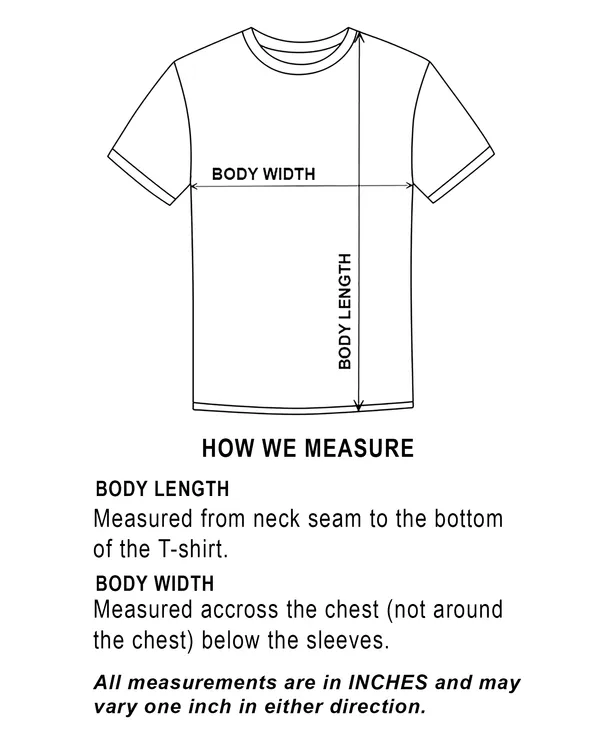
Unisex Hoodie
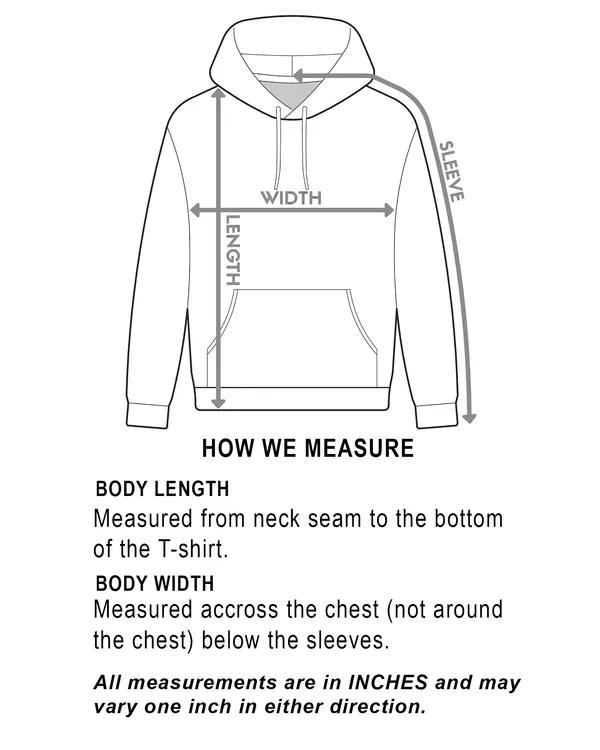
Unisex Sweatshirt
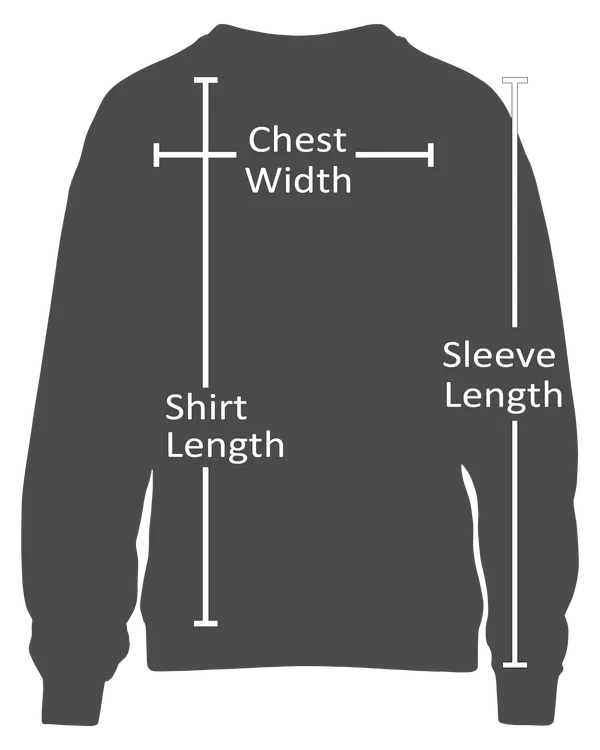
Men's Zip Hoodie
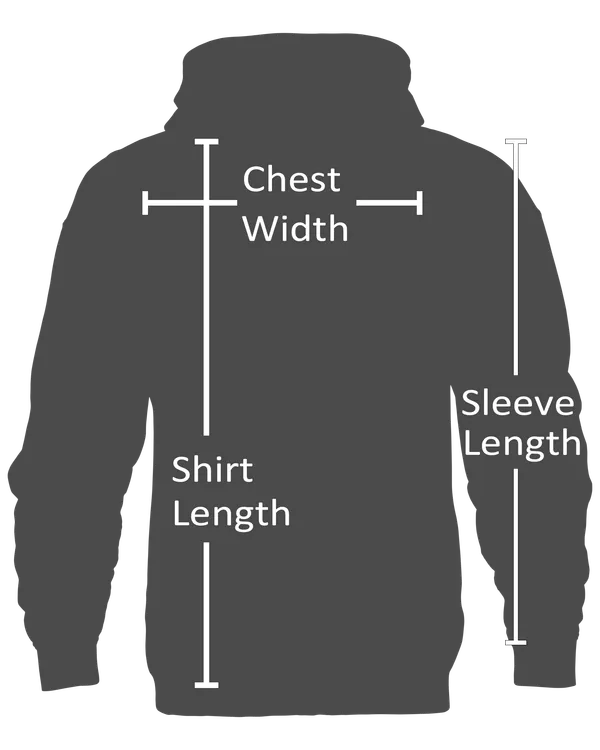
Men's Long Sleeved T-Shirt
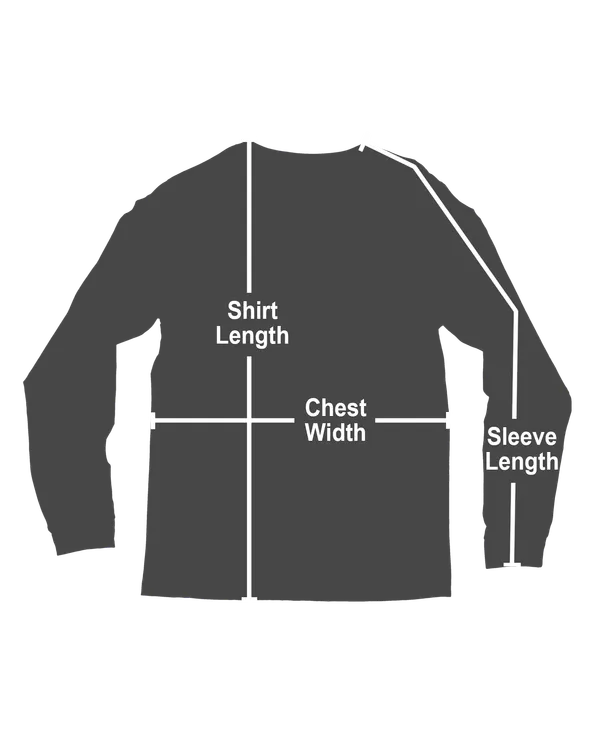
Men's V-Neck T-Shirt
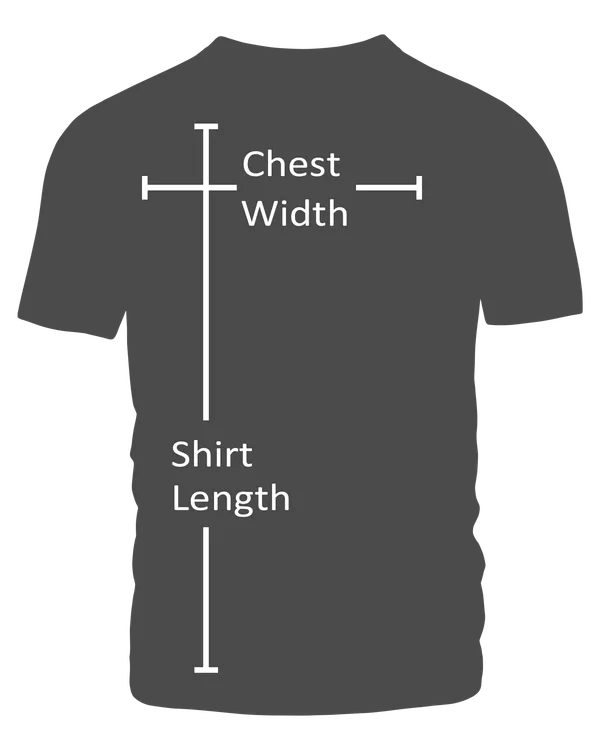
Men's Tank Top

Ladies Long Sleeve T Shirt
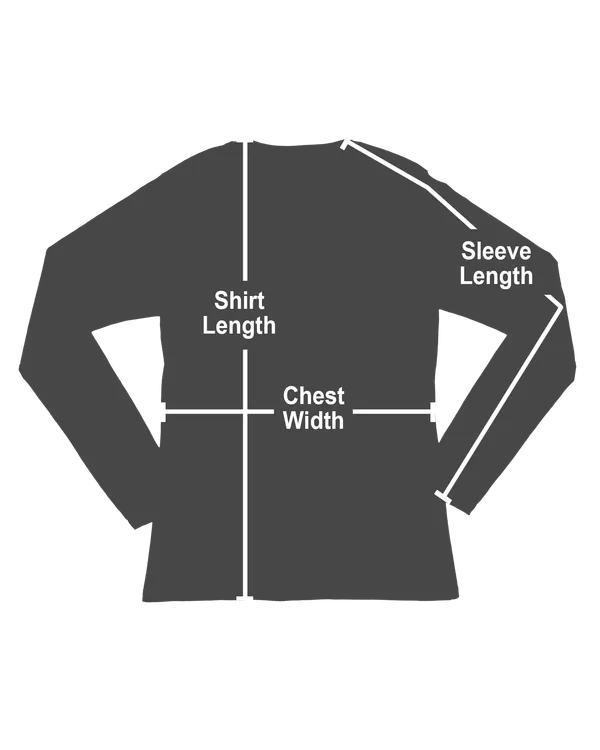
Ladies T Shirt

Ladies Hooded Sweatshirt
Ladies tank top.

Ladies V Neck T Shirt
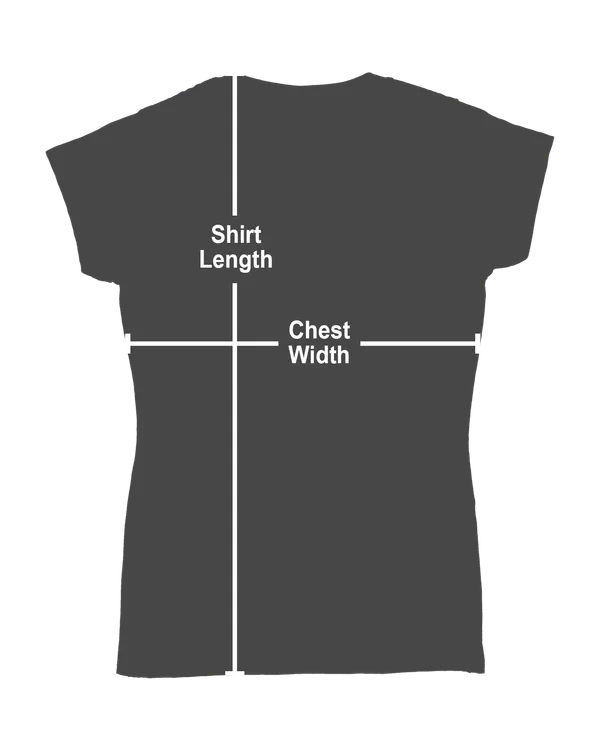
Youth T Shirt
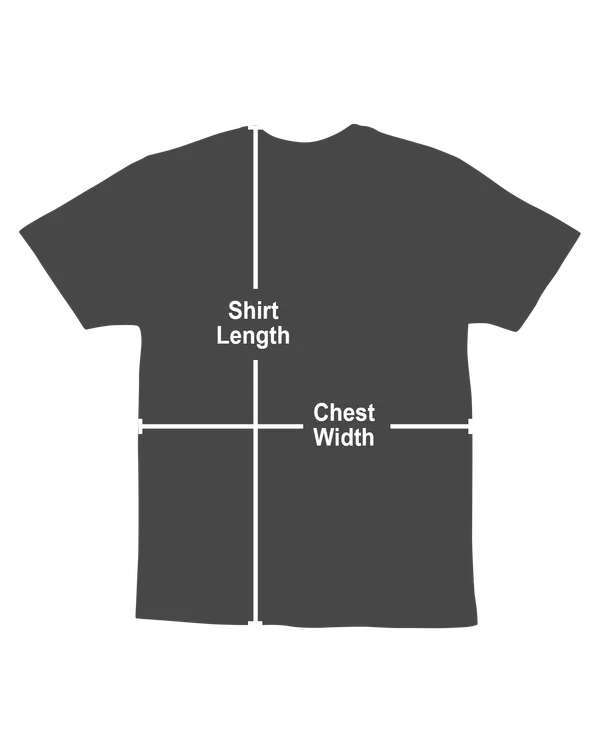
Cloth Face Mask

Baseball Jersey Shirt

Basketball Jersey Tank
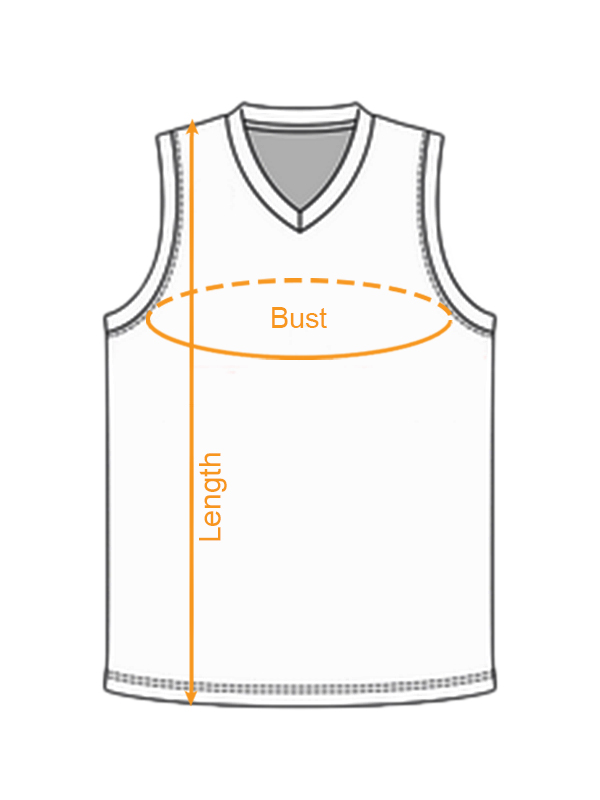
Basketball Suit

Hawaiian Shirt
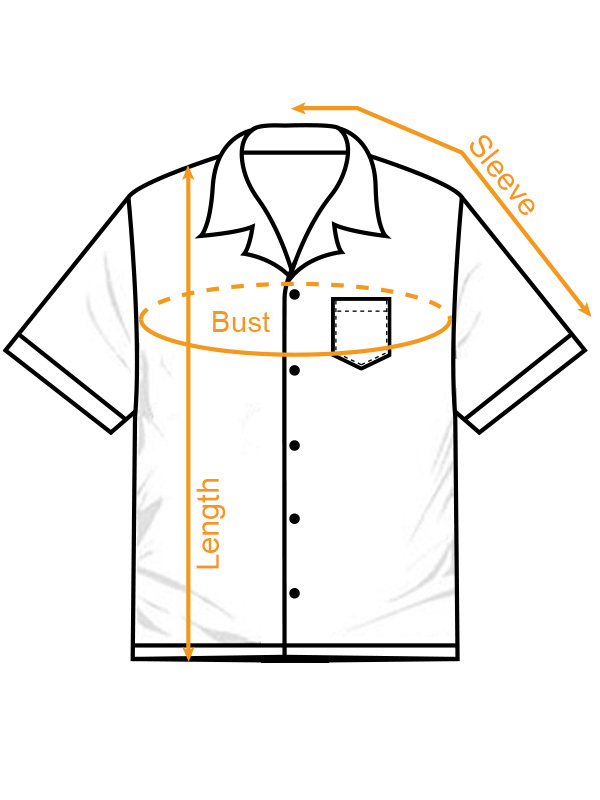
Bp Tour 2010 Shirt Our Style: Men T Shirt, Women T Shirt, Long Sleeves, Hoodie, Sweatshirt Plus Size Our Size: S, M, L XL, 2XL, 3XL, 4XL, Plus Size T Shirt design, custom t shirts, graphic tees, custom t shirt design. Protect yourself with comfort and confidence
- Description
- Reviews (4)
- Shipping Information
- Preshrunk t-shirt in 100% cotton.
- Sport Grey: 90% US Cotton / 10% Polyester
- Dark Heather: 50% US Cotton / 50% Polyester
- Seamless twin needle 7/8" collar.
- Taped neck and shoulders. Rolled forward shoulders for better fit.
- Twin needle sleeve and bottom hems. Quarter-turned to eliminate centre crease.
- Safety Green: Compliant with ANSI / ISEA 107
- Printing technique: DTG
- Machine wash at max. 30ºC/86ºF with short spin cycle, inside out with like colors
- Do not use bleach
- Do not iron
- Do not dry clean
- Do not tumble dry
- 50% Cotton / 50% Polyester
- Preshrunk fleece knit
- Double-lined hood with colour-matched drawcord
- Double-needle stitching at shoulder, armhole, neck, waistband and cuffs
- Pouch pocket
- 1 x 1 rib with spandex
- Air jet yarns = softer feel and reduced pilling
- Tear away label
- 50/50 cotton/polyester
- Heather Sport colors: 60/40 polyester/cotton
- 1x1 rib with spandex
- Air jet yarn for softer feel and reduced pilling
- Fiber content varies by color, see color list for exceptions
- Material: 50% cotton - 50% polyester; fabric material may vary depending on color and size
- Unlined hood with colour-matched drawcord
- Metal zipper
- Overlapped fabric across zipper allows full front printing
- Pouch pockets
- 6 oz./yd² (US) 10.1 oz./L yd (CA), 100% cotton, 18 singles
- Ash Grey: 99/1 cotton/polyester
- Dark Heather & Safety colors: 50/50 cotton/polyester
- Sport Grey: 90/10 cotton/polyester
- Double-needle bottom hem
- Seamless double-needle 7/8" collar
- Taped neck and shoulders
- 153.0 G/SqM (White 144.0 G/SqM)
- 100% Ring Spun Cotton
- Eurofit - sleeker fit in shoulder and sleeve
- Semi-fitted
- High stitch density for smoother printing surface
- 1.6 cm mitered v-neck collar
- Tearaway label
- Rolled forward shoulder
- Twin needle sleeve and bottom hems
- Quarter-turned to eliminate center crease
- Material: 100% cotton
- Bound neck and armholes
- Classic midweight fabric
- Fitted silhouette with side seam
- Seamless twin needle 1/2" collar
- 100% preshrunk cotton; Ash Grey 99% cotton, 1% polyester
- 5.3 oz/sq yd
- Cap sleeves
- Double-needle sleeve and bottom hems
- Preshrunk jersey knit
- Seamless double-needle 1/2" collar
- Material: 52% Airlume combed and ringspun cotton, 48% polyester; fabric material may vary depending on color and size
- Twill-taped neck; Front pouch pocket, Dyed-to-match drawcord
- 3-panel hood, rib-knit details at cuff hem
- Colorfast; Shrink-resistant
- 4.5-ounce, 60% combed ring-spun cotton, 40% polyester; fabric material may vary depending on color and size
- 1 1/2" straps for S - L // 1 3/4" straps for XL 2XL
- Rib knit trim applied to neckline and armholes
- Twin needle bottom hem
- Solid Colors - 100% Airlume combed and ring-spun cotton, 32 single 4.2oz.
- Athletic Heather - 90% Airlume combed and ring-spun cotton, 10% poly
- Dark Grey Heather - 52% Airlume combed and ring-spun cotton, 48% poly
- 100% Cotton
- Seamless twin needle 3/4" collar
- CPSIA Tracking Label Compliant
- Grip it and sip it. Personalize an mug with one of your favorite images. Full color imprinting, strong ceramic construction, and everyday convenience come together in one product.
- High quality ceramic mug
- Dishwasher safe
- Microwave safe
- Decorated with full wrap dye sublimation
- Ceramic mug decorated with full wrap
- Graphic is revealed when hot water is added
- Not dishwasher safe
- Our hats are available in a variety of colors and are suitable for both men and women. They provide excellent sun protection and are ideal for any outdoor activity! With adjustable snap back construction (one size fits all), everyone in your family can now wear these hats!
- Add style and personality to your hat collection with a custom printed classic cap.
- Constructed with 100% premium polyester that’s lightweight for maximum comfort and breathability.
- Universal Fit: One size fits most with an adjustable snapback closure.
- Printing technique: Sublimation
- Do not bleach
- Do not wash
- Printed in the USA
- Worldwide shipping
- Print type: UV printing
- Material: Stainless steel
- Color: White background
- Sizing: 12oz, 20oz, 30oz
- Brand: Generic
- Hand wash only with water and mild detergents
- Can not be used in the dishwasher
- Vibrant color reproduction
- Lightweight and long-lasting
- Double-wall vacuum insulation technology to keep the liquid temperature constant for several hours
- Non-BPA, non-toxic
- Double Layer
- Pocket for filter
- Oeko-tex certificate
- Eco-friendly print
4 reviews for Bp Tour 2010 Jay-Z T-Shirt
Maya Ellen Hopkins – July 3, 2023
I really appreciate the customer service that was provided on my order. I was visiting in the UK and wanted to purchase a long-sleeve round neck shirt to take back to Canada as I could save on the shipping. The customer service representative was incredibly helpful in getting the package sent to my holiday accommodation in a timely manner. I wish I could get your products more easily in Canada. They are the best t-shirts I’ve ever purchased.
Stacey Jay Zane – July 3, 2023
T-shirts arrived this morning PERFECT! Thank you
M. Sindy Felin Jamie McGuire – July 3, 2023
The four teeshirts which I received recently are all absolutely perfect. A pleasure to wear lovely, soft cotton.
Irene Angel – July 3, 2023
Really happy with the products I received. The quality of the fabric is excellent! Thick, soft, perfect. I really value the effort put behind being an ethical and sustainable company and this was the main reason for my purchase. Also, the customer service I received was great. Will definitely recommend your products to friends and family.
Only logged in customers who have purchased this product may leave a review.
- Production Time: All orders are processed within 2 - 4 business days. Particularly for 3D and All Over Print shirts, production time can be up to 7 business days.
- Processing Time: It takes 1 - 2 days to ship your order to our warehouse, put your name and address on it and ship out.
- Delivery Time: Delivery time is equal to production time plus processing time and shipping time depending on the region, country and shipping package.
- The Standard shipping price is $4.99 (4-8 business days).
- The Ground shipping price is $10.99 (3-6 business days).
- The Fastship shipping price is $19.00 (2-4 business days).
- International shipping price is $17.99 (2-3 weeks).
- Order 2 items or $64.99 for our FREE SHIPPING (USA Only)
- Please Note: Estimated delivery time does not include production time 2-7 business days.
- Business days: From Monday to Friday excluding holidays.
- Return & Exchange: If for some reasons you are not happy with your purchase, we will happily work with you to correct the problems. Items can be return/exchange and get Refund within 30 days of delivery date.
- Tracking Number: When available, we will send you the tracking number with the confirmation email so that you can track the package online.
- If you have problems with shipping please send to email: [email protected]
- Men’s Apparel
- Women’s Apparel
- Track your order
- Payment Methods
- Delivery & Shipping
- Return & Refund
- DMCA Notice
- Billing Terms & Conditions
Username or email address *
Password *
Remember me Log in
Lost your password?
Username *
Email address *
Your personal data will be used to support your experience throughout this website, to manage access to your account, and for other purposes described in our privacy policy .

- Mystery Boxes
- New Arrivals
- Spring Sale
- Tops T-Shirts Hoodies Crewnecks Long Sleeves Flannels Tank Tops Jerseys
- Bottoms Denim Workwear Camo Corduroy Chino Cargo Sweatpants Shorts
- Outerwear Sweaters Light Jackets Heavy Jackets Fleeces Denim Jackets Workwear Jackets Vests
- Harley Davidson
- Bands & Music
- Nature & Animals
- Mystery Box
Your cart is empty

Jay-Z BP Tour Tee
Choose options

- Products search
- Login / Register
No products in the cart.

- TOP TRENDING
- Christmas Gifts
- Halloween Gift
- Thanksgiving Gift
- Veterans Day
- Memorial Day
- Valentine’s Day
- St Patrick Day
- Independence Day
- LGBT Community
- Hawaiian Shirt
- Ugly Sweater
- Track your order

Jay Z BP Tour 2010 Shirt
$ 19.95
- Centimeters

- 5.3-ounce, 100% cotton (99/1 cotton/poly (Ash) & 90/10 cotton/poly (Sport Grey)
- Heavyweight classic unisex tee
- Taped neck and shoulders; Tearaway label
- Decoration type: Digital Print

- 100% preshrunk cotton; Ash Grey 99% cotton, 1% polyester
- Feminine 1/2 inch rib mid scoop neck; sideseamed with slightly tapered Missy fit
- Double-needle stitching throughout; seamless rib at neck
- Decoration Type: Digital Print

- 8 oz; 55% cotton/45% polyester
- Air jet yarn for a softer feel and no pilling
- 1x1 athletic rib cuffs and waistband with spandex; Double-needle stitching
- Care: Machine wash cold; Tumble dry low

- 4 oz, 60% combed ring-spun cotton/40% polyester jersey
- Fabric laundered for reduced shrinkage; Runs small, we suggest ordering up
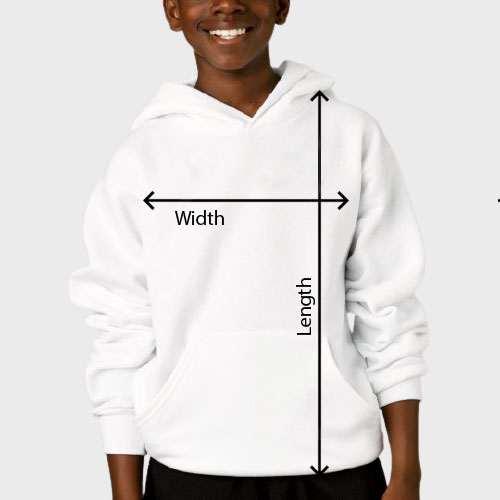
- 7.75-ounce, 50% cotton, 50% polyester
- No drawcord on kids' hoodies
- We suggest ordering one or two sizes up for a fuller fit; Please refer to size chart for actual garment measurements

Products are fulfilled and shipping from the
Jul 12 - Jul 16
Jul 23 - Jul 30
- Description
- Shipping & Manufacturing Info
From casual outings to social events, our Jay Z BP Tour 2010 Shirt is the ultimate wardrobe staple. They effortlessly transition from day to night, making them perfect for any occasion and giving you endless outfit possibilities.
Whether you’re a trendsetter or a classic fashion enthusiast, our t-shirt collection offers a versatile canvas to showcase your personal style. Dress it up or down, layer it, or let it shine on its own—make it uniquely yours.
Click “Add to Cart” and let your style shine with our must-have t-shirt collection.
View more: Jay Z BP Tour 2010 Shirt
SHIPPING POLICY
Shipping cost.
The shipping cost within the U.S. is: 4.99 USD + 2 USD per additional item
For international shipping: from 19.99 USD + 6 USD per additional item
WHERE DO WE DELIVER?
We provide worldwide shipping.
Shipping time
US Regions :
Other Countries:
Handling time (Mon-Fri) : 2-9 days
Shipping time ( Mon-Fri ) : 15-30 days.
Note : The public holidays, destination countries and couriers will be affected the shipping time too.
Total delivery time= Handling time + Shipping time
HAPPY CUSTOMERS, HAPPY US
There are no reviews yet.
Be the first to review “Jay Z BP Tour 2010 Shirt” Cancel reply
Your review *
Name *
Email *
Save my name, email, and website in this browser for the next time I comment.
- Track order
Username or email address *
Password *
Remember me Log in
Lost your password?
- Free shipping on all orders over $150

- Search for:
No products in the cart.
Return to shop

- All products
- Music Tour Shirt
- Trending Shirt
- Comfort Colors Shirt
- Funny Shirt
- Sport Shirt
- Trending Tote Bags
- School Shirt
- CherryCat Collection
- 4th July Shirt
- Mother’s Day
- Father’s Day
- Order tracking

- All Reviews
- Reviews for this item
Beautiful!!!
Such a fun shirt! Arrived fast, great quality and I can’t wait to wear it!
Fast Shipping and great quality.
Great quality shirts. Exactly as the picture. Amazing customer service!!
Great ! Love shirt
For it to have arrived quickly and the product quality did not suffer , was impressive ! It was not “vintage” like the picture just a black tee but I love it and so happy it came on time ! Will definitely purchase from this shop again ! Thank you !
The shipping and delivery were smooth and the item was perfect, just as described.
Wonderful t-shirt.
Wonderful t-shirt. Exactly as described/pictured. Will make a fantastic gift.
There are no reviews yet. Be the first one to write one.
Jay-Z Hip Hop T-Shirt Back Print BP Tour 2010 With Young Jeezy
- Description
Important Notes:
– Please note that the mockup images and product titles displayed are for illustrative purposes only. We offer a diverse range of custom products, and it is crucial for customers to select the appropriate shirt style based on their specific requirements.
– If you want to wear oversized, please up to 1-2 sizes.
MATERIALS: Unisex Shirt: – 99% cotton (fiber content may vary for different colors) – Medium fabric (5.3 oz/yd² (180 g/m²)) – Classic fit – Tear-away label – Runs true to size
Sweatshirt: – 50% Cotton 50% Polyester Runs true to size – 50% cotton: Made with special yarn spun into a very durable and smooth fabric, perfect for printing – 50% Polyester: Extremely strong polyester yarn, resistant to most chemicals, stretching and shrinking. Viscose added Pleated and soft great for shirts
Unisex Hoodie: – 50% cotton, 50% polyester – Medium-heavy fabric (8.0 oz/yd² (271 g/m²)) – Classic fit – Tear-away label – Runs true to size
Tank Top Unisex: – 99% Airlume combed and ring-spun cotton (fiber content may vary for different colors) – Extra Light fabric (3.8 oz/yd² (110 g/m²)) – Retail fit – Sewn in label – Runs true to size
Youth T-Shirt:
– 5.3 oz./yd² (US) 8.8 oz./L yd (CA), 100% cotton, 20 singles
– Ash Grey is 99/1 cotton/polyester
– Sport Grey is 90/10 cotton/polyester
– Dark Heather, Graphite Heather, Heather, Neon & Safety Colors are 50/50 cotton/polyester
– Safety Green is compliant with ANSI / ISEA 107 high-visibility standards
– Classic fit
– Classic width, rib collar
– Taped neck and shoulders for comfort and durability
– Tear away label
– CPSIA Tracking Label Compliant
– Proud member of the U.S. Cotton Trust Protocol
– Made with OEKO-TEX certified low-impact dyes
Youth Sweatshirt
– 8 oz./yd² (US) 13.3 oz./L yd (CA), 50/50 cotton/polyester, 20 singles
– 1×1 rib with spandex for enhanced stretch and recovery
– Made with OEKO-TEX certified low-impact dyes.
Youth Hoodie:
– 8 oz./yd² (US) 13.5 oz./L yd (CA), 50/50 cotton/polyester, 20 singles
– Heather colors are 60/40 polyester/cotton
– Double-lined hood
– 1 x 1 rib with spandex for enhanced stretch and recovery
– Pouch pocket
CARE INSTRUCTIONS: – Machine wash in cold water – Do not use bleach – Tumble dry low – Iron on low heat with shirt inside-out – Never iron directly over design
SATISFACTION GUARANTEE: If you are not happy with our product, please feel free to contact us, we will give the best solution to you within 24 hours.
EXCHANGE POLICY ( please read carefully!) Due to the custom nature of our products, unless the item arrives damaged or defective due to printing errors. We do not accept returns or exchanges that: – Customers do not clearly mention the customization requirements. – Customers set wrong sizes and styles (Every item is custom printed on demand as you order them. Please be sure to check size charts and measurements for the best fit. ) Should you need assistance please contact us prior to purchasing so that we can help you achieve that perfect fit. We are always happy (and quick!) to help answer any sizing and fit questions you may have

Don't have an account? Register one!
Username or email address *
Password *
Remember me Log in
Lost your password?
- We offer worldwide shipping.

- Customer’s Feedback
- Search for:
No products in the cart.
Return to shop

Jay Z Hip Hop T Shirt Back Print BP Tour 2010 With Young Jeezy

$ 19.95

- Total $ 0.00
- Description
MATERIALS: *Gildan Unisex Shirt GL5000: – 99% cotton (fiber content may vary for different colors) – Medium fabric (5.3 oz/yd² (180 g/m²)) – Classic fit – Tear-away label – Runs true to size
*Gildan Sweatshirt GL 18000: – 50% Cotton 50% Polyester Runs true to size – 50% cotton: Made with special yarn spun into a very durable and smooth fabric, perfect for printing – 50% Polyester: Extremely strong polyester yarn, resistant to most chemicals, stretching and shrinking. Viscose added Pleated and soft great for shirts
*Gildan Unisex Hoodie GL 18500: – 50% cotton, 50% polyester – Medium-heavy fabric (8.0 oz/yd² (271 g/m²)) – Classic fit – Tear-away label – Runs true to size
Tank Top Unisex: – 99% Airlume combed and ring-spun cotton (fiber content may vary for different colors) – Extra Light fabric (3.8 oz/yd² (110 g/m²)) – Retail fit – Sewn in label – Runs true to size
Youth T-Shirt:
– 5.3 oz./yd² (US) 8.8 oz./L yd (CA), 100% cotton, 20 singles
– Ash Grey is 99/1 cotton/polyester
– Sport Grey is 90/10 cotton/polyester – Dark Heather, Graphite Heather, Heather, Neon & Safety Colors are 50/50 cotton/polyester – Safety Green is compliant with ANSI / ISEA 107 high-visibility standards – Classic fit – Classic width, rib collar – Taped neck and shoulders for comfort and durability – Tear away label – CPSIA Tracking Label Compliant – Proud member of the U.S. Cotton Trust Protocol – Made with OEKO-TEX certified low-impact dyes
Youth Sweatshirt: – 8 oz./yd² (US) 13.3 oz./L yd (CA), 50/50 cotton/polyester, 20 singles – Classic fit – 1×1 rib with spandex for enhanced stretch and recovery – Tear away label – CPSIA Tracking Label Compliant – Proud member of the U.S. Cotton Trust Protocol – Made with OEKO-TEX certified low-impact dyes.
Youth Hoodie: – 8 oz./yd² (US) 13.5 oz./L yd (CA), 50/50 cotton/polyester, 20 singles – Heather colors are 60/40 polyester/cotton – Classic fit – Double-lined hood – 1 x 1 rib with spandex for enhanced stretch and recovery – Pouch pocket – Tear away label – CPSIA Tracking Label Compliant – Proud member of the U.S. Cotton Trust Protocol – Made with OEKO-TEX certified low-impact dyes
CARE INSTRUCTIONS: – Machine wash in cold water – Do not use bleach – Tumble dry low – Iron on low heat with shirt inside-out – Never iron directly over design
We will personalize the product according to the design provided in the mock-up, encompassing both the front and back. Our product range includes options for Unisex, Women, Youth, and Kid categories, featuring various Fabric Brands such as Gildan and Bella + Canvas. Moreover, we offer several styles including T-shirts, sweaters, long sleeves, and hoodies to provide you with ample choices.
Our color palette below offers additional options to suit your preferences. Please note that the mock-up serves as a visual representation of the printed design, and we will customize the products to meet your specific requirements.
Our products will be meticulously designed and customized to align with the specifications outlined on our website and tailored according to your preferences. To make your shopping experience smoother, we have included a size chart below for your reference.
1. Unisex Tee Shirt - Size Chart:

2. Women T Shirt - Size Chart:

3. Unisex Hoodie - Size Chart:

4. Unisex Crewneck Sweatshirt - Size Chart:

5. Unisex Long Sleeve Shirt - Size Chart:

6. Kid tee - Size Chart:

* Note: - Actual color may be slightly different from the image due to different monitor and light effects.
Bought it for my friend and he was happy with my gift.
Thank you for your glowing review and for highlighting our customer service team! We're thrilled to hear that you had a wonderful experience shopping with us and that you found our T-shirts of great quality. We truly appreciate your support and look forward to serving you again soon!
Will definitely order again. Thank you!

Perfect for myself and my bestie who love New Girl
Everything was A+++. The shirts are awesome!
Looked awesome on top of a midi-dress. Delivered a few days later but I still got it in time for the birthday.

Runs large but again I was expect that.

This is the 2nd sweatshirt I got from them and I was very pleased with both. I plan on buying more from them in the future!

The shirts are beautiful, great quality just as described on the ad. However, I had issues with shipping almost immediately.
Easy ordering process and fast processing/shipping!

Beautiful sweatshirt—very high quality and I love the design!

Hi. Thank you so much for your feedback! We always strive to achieve your satisfaction. Have a good day!
The sweatshirt is not quite as soft as I was hoping but quality is good and my husband loves it!

Super happy with my purchase

Sweatshirt and print were as pictured on product images.

Love this shirt, high quality, will recommend it to my friends.
It was a gift and the recipient found the motif very aesthetically pleasing. Thanks for offering such high-quality.
Item arrived and is gorgeous. Would definitely buy from again.
I’m a graphic tee lover, so happy to see all the variety! High quality and the shirts definitely exceeded expectations
rue to size. Thin material not to thick. Recommend;)
The shirts came in super quick and looked exactly as pictured. Quality of the t shirts is great, very soft!
The crewneck was super cute & exactly the color I was looking for! The print came out beautiful

Good quality material and picture. I also liked the many color options that were available.

My new favorite shirt.

Really impressed with this hoodie the color was PERFECT

As advertised and I already had someone understand the reference

Username or email address *
Password *
Remember me Log in
Lost your password?
Email address *
A link to set a new password will be sent to your email address.
Thông tin cá nhân của bạn sẽ được sử dụng để tăng cường trải nghiệm sử dụng website, để quản lý truy cập vào tài khoản của bạn, và cho các mục đích cụ thể khác được mô tả trong privacy policy của chúng tôi.
- Get Free Shipping on all orders over $65 or 2 items (USA)

- Search for:
No products in the cart.
Return to shop
- Men’s T-Shirt
- Women’s T-Shirt
- Long Sleeves T-Shirt
- 08:00 - 17:00

Bp Tour 2010 Jay-Z Shirts

$ 14.99 – $ 43.99

Unisex Standard T-Shirt

Unisex Hoodie

Unisex Sweatshirt

Men's Zip Hoodie

Men's Long Sleeved T-Shirt

Men's V-Neck T-Shirt

Men's Tank Top

Ladies Long Sleeve T Shirt

Ladies T Shirt

Ladies Hooded Sweatshirt
Ladies tank top.

Ladies V Neck T Shirt

Youth T Shirt

Cloth Face Mask

Baseball Jersey Shirt

Basketball Jersey Tank

Basketball Suit

Hawaiian Shirt

Vintage 2010 Jay-Z, Young Jeezy And Trey Songs – Blueprint 3 Tour T Shirt Our Style: Men T Shirt, Women T Shirt, Long Sleeves, Hoodie, Sweatshirt Plus Size Our Size: S, M, L XL, 2XL, 3XL, 4XL, Plus Size T Shirt design, custom t shirts, graphic tees, custom t shirt design. Protect yourself with comfort and confidence
- Description
- Reviews (4)
- Shipping Information
- Preshrunk t-shirt in 100% cotton.
- Sport Grey: 90% US Cotton / 10% Polyester
- Dark Heather: 50% US Cotton / 50% Polyester
- Seamless twin needle 7/8" collar.
- Taped neck and shoulders. Rolled forward shoulders for better fit.
- Twin needle sleeve and bottom hems. Quarter-turned to eliminate centre crease.
- Safety Green: Compliant with ANSI / ISEA 107
- Printing technique: DTG
- Machine wash at max. 30ºC/86ºF with short spin cycle, inside out with like colors
- Do not use bleach
- Do not iron
- Do not dry clean
- Do not tumble dry
- 50% Cotton / 50% Polyester
- Preshrunk fleece knit
- Double-lined hood with colour-matched drawcord
- Double-needle stitching at shoulder, armhole, neck, waistband and cuffs
- Pouch pocket
- 1 x 1 rib with spandex
- Air jet yarns = softer feel and reduced pilling
- Tear away label
- 50/50 cotton/polyester
- Heather Sport colors: 60/40 polyester/cotton
- 1x1 rib with spandex
- Air jet yarn for softer feel and reduced pilling
- Fiber content varies by color, see color list for exceptions
- Material: 50% cotton - 50% polyester; fabric material may vary depending on color and size
- Unlined hood with colour-matched drawcord
- Metal zipper
- Overlapped fabric across zipper allows full front printing
- Pouch pockets
- 6 oz./yd² (US) 10.1 oz./L yd (CA), 100% cotton, 18 singles
- Ash Grey: 99/1 cotton/polyester
- Dark Heather & Safety colors: 50/50 cotton/polyester
- Sport Grey: 90/10 cotton/polyester
- Double-needle bottom hem
- Seamless double-needle 7/8" collar
- Taped neck and shoulders
- 153.0 G/SqM (White 144.0 G/SqM)
- 100% Ring Spun Cotton
- Eurofit - sleeker fit in shoulder and sleeve
- Semi-fitted
- High stitch density for smoother printing surface
- 1.6 cm mitered v-neck collar
- Tearaway label
- Rolled forward shoulder
- Twin needle sleeve and bottom hems
- Quarter-turned to eliminate center crease
- Material: 100% cotton
- Bound neck and armholes
- Classic midweight fabric
- Fitted silhouette with side seam
- Seamless twin needle 1/2" collar
- 100% preshrunk cotton; Ash Grey 99% cotton, 1% polyester
- 5.3 oz/sq yd
- Cap sleeves
- Double-needle sleeve and bottom hems
- Preshrunk jersey knit
- Seamless double-needle 1/2" collar
- Material: 52% Airlume combed and ringspun cotton, 48% polyester; fabric material may vary depending on color and size
- Twill-taped neck; Front pouch pocket, Dyed-to-match drawcord
- 3-panel hood, rib-knit details at cuff hem
- Colorfast; Shrink-resistant
- 4.5-ounce, 60% combed ring-spun cotton, 40% polyester; fabric material may vary depending on color and size
- 1 1/2" straps for S - L // 1 3/4" straps for XL 2XL
- Rib knit trim applied to neckline and armholes
- Twin needle bottom hem
- Solid Colors - 100% Airlume combed and ring-spun cotton, 32 single 4.2oz.
- Athletic Heather - 90% Airlume combed and ring-spun cotton, 10% poly
- Dark Grey Heather - 52% Airlume combed and ring-spun cotton, 48% poly
- 100% Cotton
- Seamless twin needle 3/4" collar
- CPSIA Tracking Label Compliant
- Grip it and sip it. Personalize an mug with one of your favorite images. Full color imprinting, strong ceramic construction, and everyday convenience come together in one product.
- High quality ceramic mug
- Dishwasher safe
- Microwave safe
- Decorated with full wrap dye sublimation
- Ceramic mug decorated with full wrap
- Graphic is revealed when hot water is added
- Not dishwasher safe
- Our hats are available in a variety of colors and are suitable for both men and women. They provide excellent sun protection and are ideal for any outdoor activity! With adjustable snap back construction (one size fits all), everyone in your family can now wear these hats!
- Add style and personality to your hat collection with a custom printed classic cap.
- Constructed with 100% premium polyester that’s lightweight for maximum comfort and breathability.
- Universal Fit: One size fits most with an adjustable snapback closure.
- Printing technique: Sublimation
- Do not bleach
- Do not wash
- Printed in the USA
- Worldwide shipping
- Print type: UV printing
- Material: Stainless steel
- Color: White background
- Sizing: 12oz, 20oz, 30oz
- Brand: Generic
- Hand wash only with water and mild detergents
- Can not be used in the dishwasher
- Vibrant color reproduction
- Lightweight and long-lasting
- Double-wall vacuum insulation technology to keep the liquid temperature constant for several hours
- Non-BPA, non-toxic
- Double Layer
- Pocket for filter
- Oeko-tex certificate
- Eco-friendly print
4 reviews for Bp Tour 2010 Jay-Z Shirts
Christina Lauren Christina Lauren – July 3, 2023
Just to let you know that my purchases arrived on Saturday and as usual I am very pleased with them. Many thanks again for everything – great customer service!
Henry Tyler – July 3, 2023
I just got my first order and I have one word WOW!!!! Love, Love, Love these cloths!! I had my doubts before I ordered because most sites plus size cloths are too small and I’m usually disappointment, but not this time!! The shipping was also really fast1 only took about 9 days to get to me. Love it!! I’ll be back to buy more. For Sure!
Henry Ann Lindsay – July 3, 2023
I absolutely adore the trendy styles this store offers. The shirts fit so well and they look amazing on a curvy figure. I really appreciate this option and the quality of the goods is so great that I will order product in the future. Thank you so much for making me feel beautiful!
Nicholas Henry – July 3, 2023
Thank you so much. I love the shirt. Thank you again. Great customer service. Fast Shipping.
Only logged in customers who have purchased this product may leave a review.
- Production Time: All orders are processed within 2 - 4 business days.
- Processing Time: It takes 1 - 2 days to ship your order to our warehouse, put your name and address on it and ship out.
- Delivery Time: Delivery time is equal to production time plus processing time and shipping time depending on the region, country and shipping package.
- The Standard shipping price is $4.99 (4-8 business days).
- The Ground shipping price is $10.99 (3-6 business days).
- The Fastship shipping price is $19.00 (2-4 business days).
- International shipping price is $17.99 (2-3 weeks).
- Order 2 items or $64.99 for our FREE SHIPPING (USA Only)
- Please Note: Estimated delivery time does not include production time 2-4 business days.
- Business days: From Monday to Friday excluding holidays.
- Return & Exchange: If for some reasons you are not happy with your purchase, we will happily work with you to correct the problems. Items can be return/exchange and get Refund within 30 days of delivery date.
- Tracking Number: When available, we will send you the tracking number with the confirmation email so that you can track the package online.
- If you have problems with shipping please send to email: [email protected]
Related products

Pedro Pascal Wears I Make Pour Decisions Shirt The Last Of Us Hbo Status

Roman Reigns Szn Fuck Them Kids Shirt Reigns Era

Shirts That Go Hard I Hate Cops And Fuck Them In The Mouth Giorgio Armani Shirt

Queen Of The Chiefs Kingdom Three Things Are Certain Death Taxes And The Independence Ave Bridge Shirt Raygun Store
- Men’s Apparel
- Women’s Apparel
- Track your order
- Payment Methods
- Delivery & Shipping
- Return & Refund
- DMCA Notice
- Billing Terms & Conditions
Username or email address *
Password *
Remember me Log in
Lost your password?
Username *
Email address *
Your personal data will be used to support your experience throughout this website, to manage access to your account, and for other purposes described in our privacy policy .

Jay-Z Announces Additional BP3 North American Tour Dates Including Hometown Madison Square Garden Appearance 3/2
After a stellar 2009, surpassing Elvis as the solo artist with the most # 1 albums, scoring a # 1 single with the anthemic "Empire State Of Mind" with Alicia Keys , performing during the World Series at Yankee Stadium, winning American Music Awards, sitting down with Oprah and staging a sold out 2009 tour, JAY-Z has added dates for his BP3 2010 North American tour. JAY-Z will make a triumphant hometown appearance on March 2nd when he returns to Madison Square Garden with a performance that is sure to galvanize New York City fans. He has also added a date at the Mohegan Sun in Uncasville on March 5th. It was also announced today that R&B singer Trey Songz will join JAY-Z and Grammy-nominated rapper Young Jeezy on the nationwide tour. Tickets for the newly announced dates go on sale at LiveNation.com beginning on Friday, January 15th, with all other dates on sale now.
Citi® cardmembers will have access to presale tickets for the New York City date beginning on January 12th at 10am local time through Citi's Private Pass® Program. For complete presale details visit www.citiprivatepass.com. For the Madison Square Garden show, Citi® cardmembers will also have access to VIP Ticket Packages that include VIP Lounge seats, personal concierge, a private pre-show VIP party and more.
"Jay-Z is the greatest rapper alive. Anyone who was in attendance at his sold-out KeyArena concert Saturday night can attest to that fact. Hova, Young Hov, Jigga, Hovito, whatever you call him Shawn Carter is on top of the rap game and there were no signs of him stepping down any time soon during his career-spanning two-hour show."
Seattle Post Intelligencer (KeyArena Review), October 19, 2009 The 2009 North American tour, a mix of 26 colleges and arenas, featured sold out dates including Pennsylvania State's Bryce Center, UCLA's Pauley Pavilion, Northern Kentucky University's Bank of Kentucky, Eastern Michigan University's Convocation Center, and the University of Massachusetts' Mullins Center as well as, the KeyArena in Seattle, Kelowna British Columbia's Prospera Place, Philadelphia's Wachovia Center, Providence's Dunkin' Donuts Center and Baltimore's 1st Mariner Arena.
For complete ticket, tour and on sale information visit LiveNation.com. JAY-Z BP3 TOUR 2010 Feb 20 Sunrise, FL Bank Atlantic Center Feb 22 Houston, TX Toyota Center Feb 23 Dallas, TX American Airlines Center Feb 25 New Orleans, LA New Orleans Arena Feb 27 Atlanta, GA Philips Arena Feb 28 Greensboro, NC Greensboro Coliseum Complex Mar 02 New York, NY Madison Square Garden * Mar 03 Washington, DC Verizon Center Mar 05 Uncasville, CT Mohegan Sun Mar 06 East Rutherford, NJ Izod Center Mar 07 Norfolk, VA Scope Arena Mar 11 Boston, MA TD Garden Mar 12 Uniondale, NY Nassau Coliseum Mar 14 Detroit, MI The Palace of Auburn Hills Mar 16 Pittsburgh, PA Mellon Arena Mar 18 Chicago, IL United Center Mar 19 St. Louis, MO Scottrade Center Mar 20 Indianapolis, IN Conseco Fieldhouse Mar 22 Denver, CO Pepsi Center Mar 24 San Jose, CA HP Pavilion Mar 26 Los Angeles, CA Staples Center * Tickets on sale Friday, January 15th.
ABOUT Live Nation Live Nation 's mission is to maximize the live concert experience. Our core business is producing, marketing and selling live concerts for artists via our global concert pipe. Live Nation is the largest producer of live concerts in the world, annually producing over 22,000 concerts for 1,600 artists in 33 countries. During 2008, the company sold over 50 million concert tickets and drove over 70 million unique visitors to LiveNation.com. Live Nation is transforming the concert business by expanding its concert platform into ticketing and building the industry's first artist-to-fan vertically integrated concert platform. The company is headquartered in Los Angeles, California and is listed on the New York Stock Exchange, trading under the symbol LYV. For additional information about the company, please visit www.livenation.com/investors .
Long Island SHOWS
Recommended For You

- Get Free Shipping on all orders over $65 or 2 items (USA Orders)

- Search for:
- Login / Register
No products in the cart.
Return to shop
- Men’s T-Shirt
- Women’s T-Shirt
- Long Sleeves T-Shirt
- 08:00 - 17:00
Beyoncé Legion Bp Tour 2010 Jay-Z Long Sleeve Tee

$ 14.99 – $ 43.99

Unisex Standard T-Shirt

Unisex Hoodie

Unisex Sweatshirt

Men's Zip Hoodie

Men's Long Sleeved T-Shirt

Men's V-Neck T-Shirt

Men's Tank Top

Ladies Long Sleeve T Shirt

Ladies T Shirt

Ladies Hooded Sweatshirt
Ladies tank top.

Ladies V Neck T Shirt

Youth T Shirt

Cloth Face Mask

Baseball Jersey Shirt

Basketball Jersey Tank

Basketball Suit

Hawaiian Shirt

Bp Tour 2010 Sweatshirt Our Style: Men T Shirt, Women T Shirt, Long Sleeves, Hoodie, Sweatshirt Plus Size Our Size: S, M, L XL, 2XL, 3XL, 4XL, Plus Size T Shirt design, custom t shirts, graphic tees, custom t shirt design. Protect yourself with comfort and confidence
- Description
- Reviews (4)
- Shipping Information
- Preshrunk t-shirt in 100% cotton.
- Sport Grey: 90% US Cotton / 10% Polyester
- Dark Heather: 50% US Cotton / 50% Polyester
- Seamless twin needle 7/8" collar.
- Taped neck and shoulders. Rolled forward shoulders for better fit.
- Twin needle sleeve and bottom hems. Quarter-turned to eliminate centre crease.
- Safety Green: Compliant with ANSI / ISEA 107
- Printing technique: DTG
- Machine wash at max. 30ºC/86ºF with short spin cycle, inside out with like colors
- Do not use bleach
- Do not iron
- Do not dry clean
- Do not tumble dry
- 50% Cotton / 50% Polyester
- Preshrunk fleece knit
- Double-lined hood with colour-matched drawcord
- Double-needle stitching at shoulder, armhole, neck, waistband and cuffs
- Pouch pocket
- 1 x 1 rib with spandex
- Air jet yarns = softer feel and reduced pilling
- Tear away label
- 50/50 cotton/polyester
- Heather Sport colors: 60/40 polyester/cotton
- 1x1 rib with spandex
- Air jet yarn for softer feel and reduced pilling
- Fiber content varies by color, see color list for exceptions
- Material: 50% cotton - 50% polyester; fabric material may vary depending on color and size
- Unlined hood with colour-matched drawcord
- Metal zipper
- Overlapped fabric across zipper allows full front printing
- Pouch pockets
- 6 oz./yd² (US) 10.1 oz./L yd (CA), 100% cotton, 18 singles
- Ash Grey: 99/1 cotton/polyester
- Dark Heather & Safety colors: 50/50 cotton/polyester
- Sport Grey: 90/10 cotton/polyester
- Double-needle bottom hem
- Seamless double-needle 7/8" collar
- Taped neck and shoulders
- 153.0 G/SqM (White 144.0 G/SqM)
- 100% Ring Spun Cotton
- Eurofit - sleeker fit in shoulder and sleeve
- Semi-fitted
- High stitch density for smoother printing surface
- 1.6 cm mitered v-neck collar
- Tearaway label
- Rolled forward shoulder
- Twin needle sleeve and bottom hems
- Quarter-turned to eliminate center crease
- Material: 100% cotton
- Bound neck and armholes
- Classic midweight fabric
- Fitted silhouette with side seam
- Seamless twin needle 1/2" collar
- 100% preshrunk cotton; Ash Grey 99% cotton, 1% polyester
- 5.3 oz/sq yd
- Cap sleeves
- Double-needle sleeve and bottom hems
- Preshrunk jersey knit
- Seamless double-needle 1/2" collar
- Material: 52% Airlume combed and ringspun cotton, 48% polyester; fabric material may vary depending on color and size
- Twill-taped neck; Front pouch pocket, Dyed-to-match drawcord
- 3-panel hood, rib-knit details at cuff hem
- Colorfast; Shrink-resistant
- 4.5-ounce, 60% combed ring-spun cotton, 40% polyester; fabric material may vary depending on color and size
- 1 1/2" straps for S - L // 1 3/4" straps for XL 2XL
- Rib knit trim applied to neckline and armholes
- Twin needle bottom hem
- Solid Colors - 100% Airlume combed and ring-spun cotton, 32 single 4.2oz.
- Athletic Heather - 90% Airlume combed and ring-spun cotton, 10% poly
- Dark Grey Heather - 52% Airlume combed and ring-spun cotton, 48% poly
- 100% Cotton
- Seamless twin needle 3/4" collar
- CPSIA Tracking Label Compliant
- Grip it and sip it. Personalize an mug with one of your favorite images. Full color imprinting, strong ceramic construction, and everyday convenience come together in one product.
- High quality ceramic mug
- Dishwasher safe
- Microwave safe
- Decorated with full wrap dye sublimation
- Ceramic mug decorated with full wrap
- Graphic is revealed when hot water is added
- Not dishwasher safe
- Our hats are available in a variety of colors and are suitable for both men and women. They provide excellent sun protection and are ideal for any outdoor activity! With adjustable snap back construction (one size fits all), everyone in your family can now wear these hats!
- Add style and personality to your hat collection with a custom printed classic cap.
- Constructed with 100% premium polyester that’s lightweight for maximum comfort and breathability.
- Universal Fit: One size fits most with an adjustable snapback closure.
- Printing technique: Sublimation
- Do not bleach
- Do not wash
- Printed in the USA
- Worldwide shipping
- Print type: UV printing
- Material: Stainless steel
- Color: White background
- Sizing: 12oz, 20oz, 30oz
- Brand: Generic
- Hand wash only with water and mild detergents
- Can not be used in the dishwasher
- Vibrant color reproduction
- Lightweight and long-lasting
- Double-wall vacuum insulation technology to keep the liquid temperature constant for several hours
- Non-BPA, non-toxic
- Double Layer
- Pocket for filter
- Oeko-tex certificate
- Eco-friendly print
4 reviews for Beyoncé Legion Bp Tour 2010 Jay-Z Long Sleeve Tee
Matthew Kevin – July 3, 2023
I think this was my third order from this shop, seven shirts in total over the years. Perfect order as always, fast shipping and the shirts stay beautiful even with frequent wear!
Jamie McGuire Victoria – July 3, 2023
I love the shirts from this website!! I am so glad I found them…..everything has been spot on, fits wonderfully, styles are trendy and lots to choose from!! Thanks for being here for us!!!
Alan Hollinghurst Anthony – July 3, 2023
I love the T-shirt so far! Washed and ironed once so far and all good. I will probably order the same style in more colours.
Bryan Bryan – July 3, 2023
Amazing services and excellent prices! Recommend to all my friends!
Only logged in customers who have purchased this product may leave a review.
- Production Time: All orders are processed within 2 - 4 business days. Particularly for 3D and All Over Print shirts, production time can be up to 7 business days.
- Processing Time: It takes 1 - 2 days to ship your order to our warehouse, put your name and address on it and ship out.
- Delivery Time: Delivery time is equal to production time plus processing time and shipping time depending on the region, country and shipping package.
- The Standard shipping price is $4.99 (4-8 business days).
- The Ground shipping price is $10.99 (3-6 business days).
- The Fastship shipping price is $19.00 (2-4 business days).
- International shipping price is $17.99 (2-3 weeks).
- Order 2 items or $64.99 for our FREE SHIPPING (USA Only)
- Please Note: Estimated delivery time does not include production time 2-7 business days.
- Business days: From Monday to Friday excluding holidays.
- Return & Exchange: If for some reasons you are not happy with your purchase, we will happily work with you to correct the problems. Items can be return/exchange and get Refund within 30 days of delivery date.
- Tracking Number: When available, we will send you the tracking number with the confirmation email so that you can track the package online.
- If you have problems with shipping please send to email: [email protected]
- Men’s Apparel
- Women’s Apparel
- Track your order
- Payment Methods
- Delivery & Shipping
- Return & Refund
- DMCA Notice
- Billing Terms & Conditions
Username or email address *
Password *
Remember me Log in
Lost your password?
Username *
Email address *
Your personal data will be used to support your experience throughout this website, to manage access to your account, and for other purposes described in our privacy policy .
- Get Free Shipping on all orders over $65 or 2 items (USA Orders)

- Search for:
No products in the cart.
Return to shop
- Men’s T-Shirt
- Women’s T-Shirt
- Long Sleeves T-Shirt
- 08:00 - 17:00
Bp Tour 2010 Jay-Z T Shirt

$ 14.99 – $ 43.99

Unisex Standard T-Shirt

Unisex Hoodie

Unisex Sweatshirt

Men's Zip Hoodie

Men's Long Sleeved T-Shirt

Men's V-Neck T-Shirt

Men's Tank Top

Ladies Long Sleeve T Shirt

Ladies T Shirt

Ladies Hooded Sweatshirt
Ladies tank top.

Ladies V Neck T Shirt

Youth T Shirt

Cloth Face Mask

Baseball Jersey Shirt

Basketball Jersey Tank

Basketball Suit

Hawaiian Shirt

Official Beyoncé Legion Bp Tour 2010 Jay-Z Shirt Our Style: Men T Shirt, Women T Shirt, Long Sleeves, Hoodie, Sweatshirt Plus Size Our Size: S, M, L XL, 2XL, 3XL, 4XL, Plus Size T Shirt design, custom t shirts, graphic tees, custom t shirt design. Protect yourself with comfort and confidence
- Description
- Reviews (4)
- Shipping Information
- Preshrunk t-shirt in 100% cotton.
- Sport Grey: 90% US Cotton / 10% Polyester
- Dark Heather: 50% US Cotton / 50% Polyester
- Seamless twin needle 7/8" collar.
- Taped neck and shoulders. Rolled forward shoulders for better fit.
- Twin needle sleeve and bottom hems. Quarter-turned to eliminate centre crease.
- Safety Green: Compliant with ANSI / ISEA 107
- Printing technique: DTG
- Machine wash at max. 30ºC/86ºF with short spin cycle, inside out with like colors
- Do not use bleach
- Do not iron
- Do not dry clean
- Do not tumble dry
- 50% Cotton / 50% Polyester
- Preshrunk fleece knit
- Double-lined hood with colour-matched drawcord
- Double-needle stitching at shoulder, armhole, neck, waistband and cuffs
- Pouch pocket
- 1 x 1 rib with spandex
- Air jet yarns = softer feel and reduced pilling
- Tear away label
- 50/50 cotton/polyester
- Heather Sport colors: 60/40 polyester/cotton
- 1x1 rib with spandex
- Air jet yarn for softer feel and reduced pilling
- Fiber content varies by color, see color list for exceptions
- Material: 50% cotton - 50% polyester; fabric material may vary depending on color and size
- Unlined hood with colour-matched drawcord
- Metal zipper
- Overlapped fabric across zipper allows full front printing
- Pouch pockets
- 6 oz./yd² (US) 10.1 oz./L yd (CA), 100% cotton, 18 singles
- Ash Grey: 99/1 cotton/polyester
- Dark Heather & Safety colors: 50/50 cotton/polyester
- Sport Grey: 90/10 cotton/polyester
- Double-needle bottom hem
- Seamless double-needle 7/8" collar
- Taped neck and shoulders
- 153.0 G/SqM (White 144.0 G/SqM)
- 100% Ring Spun Cotton
- Eurofit - sleeker fit in shoulder and sleeve
- Semi-fitted
- High stitch density for smoother printing surface
- 1.6 cm mitered v-neck collar
- Tearaway label
- Rolled forward shoulder
- Twin needle sleeve and bottom hems
- Quarter-turned to eliminate center crease
- Material: 100% cotton
- Bound neck and armholes
- Classic midweight fabric
- Fitted silhouette with side seam
- Seamless twin needle 1/2" collar
- 100% preshrunk cotton; Ash Grey 99% cotton, 1% polyester
- 5.3 oz/sq yd
- Cap sleeves
- Double-needle sleeve and bottom hems
- Preshrunk jersey knit
- Seamless double-needle 1/2" collar
- Material: 52% Airlume combed and ringspun cotton, 48% polyester; fabric material may vary depending on color and size
- Twill-taped neck; Front pouch pocket, Dyed-to-match drawcord
- 3-panel hood, rib-knit details at cuff hem
- Colorfast; Shrink-resistant
- 4.5-ounce, 60% combed ring-spun cotton, 40% polyester; fabric material may vary depending on color and size
- 1 1/2" straps for S - L // 1 3/4" straps for XL 2XL
- Rib knit trim applied to neckline and armholes
- Twin needle bottom hem
- Solid Colors - 100% Airlume combed and ring-spun cotton, 32 single 4.2oz.
- Athletic Heather - 90% Airlume combed and ring-spun cotton, 10% poly
- Dark Grey Heather - 52% Airlume combed and ring-spun cotton, 48% poly
- 100% Cotton
- Seamless twin needle 3/4" collar
- CPSIA Tracking Label Compliant
- Grip it and sip it. Personalize an mug with one of your favorite images. Full color imprinting, strong ceramic construction, and everyday convenience come together in one product.
- High quality ceramic mug
- Dishwasher safe
- Microwave safe
- Decorated with full wrap dye sublimation
- Ceramic mug decorated with full wrap
- Graphic is revealed when hot water is added
- Not dishwasher safe
- Our hats are available in a variety of colors and are suitable for both men and women. They provide excellent sun protection and are ideal for any outdoor activity! With adjustable snap back construction (one size fits all), everyone in your family can now wear these hats!
- Add style and personality to your hat collection with a custom printed classic cap.
- Constructed with 100% premium polyester that’s lightweight for maximum comfort and breathability.
- Universal Fit: One size fits most with an adjustable snapback closure.
- Printing technique: Sublimation
- Do not bleach
- Do not wash
- Printed in the USA
- Worldwide shipping
- Print type: UV printing
- Material: Stainless steel
- Color: White background
- Sizing: 12oz, 20oz, 30oz
- Brand: Generic
- Hand wash only with water and mild detergents
- Can not be used in the dishwasher
- Vibrant color reproduction
- Lightweight and long-lasting
- Double-wall vacuum insulation technology to keep the liquid temperature constant for several hours
- Non-BPA, non-toxic
- Double Layer
- Pocket for filter
- Oeko-tex certificate
- Eco-friendly print
4 reviews for Bp Tour 2010 Jay-Z T Shirt
Jamie McGuire Jackson – July 3, 2023
Thank you so much for taking the time to leave an excellent rating. We really appreciate your business. Please let us know what we can do for you in the future.
Christina Lauren K.L. Middleton – July 3, 2023
We had an amazing experience at Website your! Excellent service and selection. Thank you!
Amanda Julian – July 3, 2023
As usual everything worked well from the ordering to delivery and I am really pleased with both items. The quality of material is superb and I find all the t-shirts I have bought from you wash really well including no twisting, which is a problem with other makes I have had the past. So, a big thank you to you all.
Penny Reid K.L. Middleton – July 3, 2023
Good quality material and print. quickly shipped
Only logged in customers who have purchased this product may leave a review.
- Production Time: All orders are processed within 2 - 4 business days. Particularly for 3D and All Over Print shirts, production time can be up to 7 business days.
- Processing Time: It takes 1 - 2 days to ship your order to our warehouse, put your name and address on it and ship out.
- Delivery Time: Delivery time is equal to production time plus processing time and shipping time depending on the region, country and shipping package.
- The Standard shipping price is $4.99 (4-8 business days).
- The Ground shipping price is $10.99 (3-6 business days).
- The Fastship shipping price is $19.00 (2-4 business days).
- International shipping price is $17.99 (2-3 weeks).
- Order 2 items or $64.99 for our FREE SHIPPING (USA Only)
- Please Note: Estimated delivery time does not include production time 2-7 business days.
- Business days: From Monday to Friday excluding holidays.
- Return & Exchange: If for some reasons you are not happy with your purchase, we will happily work with you to correct the problems. Items can be return/exchange and get Refund within 30 days of delivery date.
- Tracking Number: When available, we will send you the tracking number with the confirmation email so that you can track the package online.
- If you have problems with shipping please send to email: [email protected]
- Men’s Apparel
- Women’s Apparel
- Track your order
- Payment Methods
- Delivery & Shipping
- Return & Refund
- DMCA Notice
- Billing Terms & Conditions
Username or email address *
Password *
Remember me Log in
Lost your password?
Username *
Email address *
Your personal data will be used to support your experience throughout this website, to manage access to your account, and for other purposes described in our privacy policy .

IMAGES
VIDEO
COMMENTS
JAY-Z's BP3 North American tour will make a cross-country trek in 2010 stopping at arenas in major markets including Houston, Dallas, New Orleans, Atlanta, Greensboro, Washington, Boston ...
JAY-Z's BP3 North American tour will make a cross-country trek in 2010 stopping at arenas in major markets including Houston, Dallas, New Orleans, Atlanta, Greensboro, Washington, Boston, Pittsburgh, St Louis, Indianapolis, Denver, San Jose, Los Angeles and more. Additional day of show and on sale information will be announced shortly for stops in East Rutherford, […]
Bp Tour 2010 Jay-Z Shirt is a must-have item for any fan of the legendary rapper and entrepreneur. This shirt features the iconic logo of the Bp Tour, which was Jay-Z's first solo headlining tour in 2010. The shirt is made of high-quality cotton and comes in various sizes and colors. Order yours today and show your love for Jay-Z!
This Jay Z Bp Tour 2010 Shirt is available in different styles, including: Unisex T-shirt, Women T-shirt, Long Sleeve T-shirt, V-neck T-shirt, Unisex Pullover hoodie, Unisex Sweatshirt, Tank top. You can also buy them for all ages and genders, from Toddler, Kids, Youth, and Adults. What is more, you have more than 20 different colors to choose from to suit your taste.
Introducing the Jay Z BP Tour 2010 Shirt! Be one of the few lucky individuals to own a piece of history and proudly display your admiration for a true icon.
Searching for Vintage jay z BP Tour 2010 t shirt? We've got Vintage Men's Tops starting at $34 and plenty of other Men's Tops. Shop our selection of Vintage today!
Last.fm concert page for Jay-Z: The BP3 Tour at Toyota Center (Houston) on Feb. 22, 2010. Discuss the gig, get concert tickets, see who's attending, find similar events.
JAY-Z BP TOUR (U2 Australian Tour 2010) Itinerary ... Jay-Z was in fact supporting U2 not only in Australia but also in New Zealand for a total of 10 shows. This was the forth leg of the 360º tour which started in Auckland on November 25th 2010 and had its final date in Perth on December 19th 2010.
For complete ticket, tour and on sale information visit LiveNation.com. JAY-Z BP3 TOUR 2010 Feb 20 Sunrise, FL Bank Atlantic Center Feb 22 Houston, TX Toyota Center Feb 23 Dallas, ...
Last.fm concert page for Jay-Z: The BP3 Tour at New Orleans Arena (New Orleans) on Feb. 25, 2010. Discuss the gig, get concert tickets, see who's attending, find similar events.
Shop high-quality unique Jay-Z bp tour 2010 shirt designed and sold by Nouvette. Available in a wide range of colors and styles for men, women, ...
The Blueprint 3 is the eleventh studio album by American rapper Jay-Z, released September 8, 2009, on Roc Nation and Roc-A-Fella, through distribution from Asylum Records and Atlantic Records.It is the third album in the Blueprint series, preceded by The Blueprint (2001) and The Blueprint 2: The Gift & The Curse (2002). Production for the album took place during 2008 to 2009 at several ...
Bp Tour 2010 ShirtOur Style: Men T Shirt, Women T Shirt, Long Sleeves, Hoodie, Sweatshirt Plus SizeOur Size: S, M, L XL, 2XL, 3XL, 4XL, Plus SizeT Shirt design, custom t shirts, graphic tees, custom t shirt design.Protect yourself with comfort and confidence
Buy One Get One 50% Off - BUY 5 ITEMS GET FREE SHIPPING
Look no further than PrintingOoze.com's Jay Z Bp Tour 2010 Thank You T-shirt! Our collection celebrates the power of music with designs that showcase the iconic imagery and lyrics of some of the most beloved artists of our time. Are you a music lover looking for a way to show off your passion? Look no further than PrintingOoze.com's Jay Z Bp ...
Jay Z BP Tour 2010 Shirt, Hoodie, Long Sleeve, Sweatshirt. From casual outings to social events, our Jay Z BP Tour 2010 Shirt is the ultimate wardrobe staple.
Free shipping on all orders over $150; Menu; Search for:
We offer worldwide shipping.
Vintage 2010 Jay-Z, Young Jeezy And Trey Songs - Blueprint 3 Tour T ShirtOur Style: Men T Shirt, Women T Shirt, Long Sleeves, Hoodie, Sweatshirt Plus SizeOur Size: S, M, L XL, 2XL, 3XL, 4XL, Plus SizeT Shirt design, custom t shirts, graphic tees, custom t shirt design.Protect yourself with comfort and confidence
After a stellar 2009, surpassing Elvis as the solo artist with the most # 1 albums, scoring a # 1 single with the anthemic 'Empire State Of Mind' with Alicia Keys, performing during the World ...
No products in the cart. Disney Shirt; Music Tour Shirt; Couple Shirt; Nike Shirt; Ornament; Personalized Shirt
Bp Tour 2010 SweatshirtOur Style: Men T Shirt, Women T Shirt, Long Sleeves, Hoodie, Sweatshirt Plus SizeOur Size: S, M, L XL, 2XL, 3XL, 4XL, Plus SizeT Shirt design, custom t shirts, graphic tees, custom t shirt design.Protect yourself with comfort and confidence
Official Beyoncé Legion Bp Tour 2010 Jay-Z ShirtOur Style: Men T Shirt, Women T Shirt, Long Sleeves, Hoodie, Sweatshirt Plus SizeOur Size: S, M, L XL, 2XL, 3XL, 4XL, Plus SizeT Shirt design, custom t shirts, graphic tees, custom t shirt design.Protect yourself with comfort and confidence